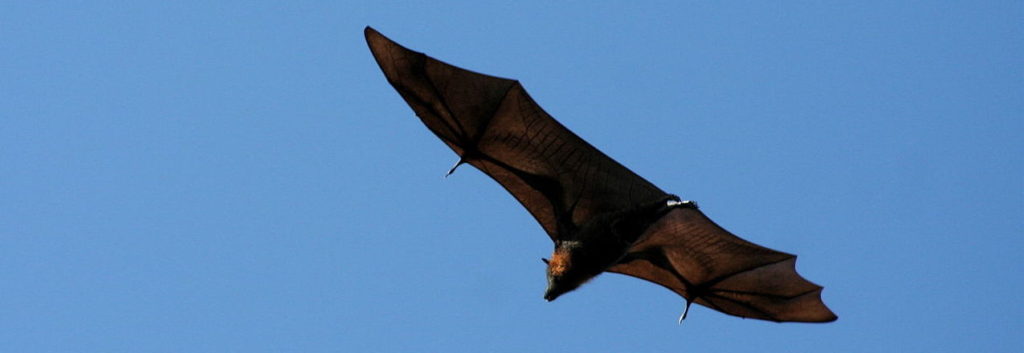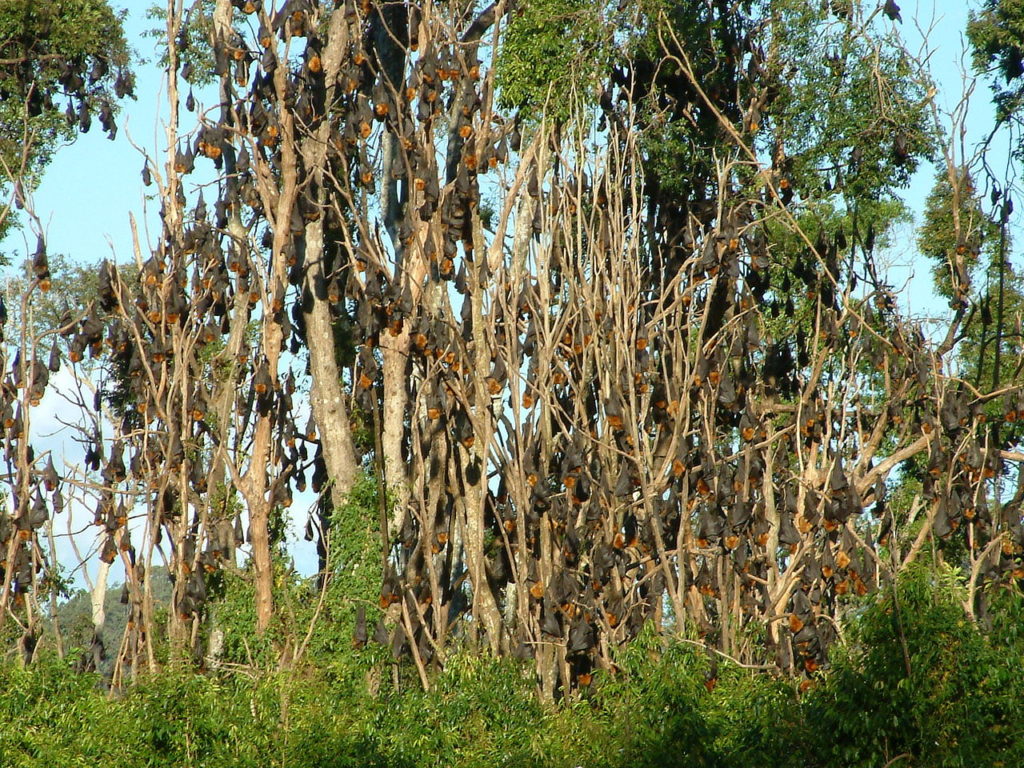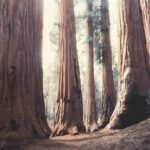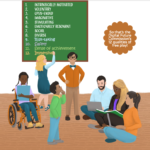Nature is not a place to visit. It is home.~Gary Snyder
I follow a lot of nature photographers on Instagram. One such photographer is Mike Unwin. So when I read his June 19 Instagram post about the US version of his children’s book, Migration, I ordered it. My copy arrived a few days ago [UK version showed up—thus, “pitches” and km in the quote below]. With illustrations by Jenni Desmond, the book “tells the stories of 20 migratory animals and their journeys, from birds and whales to sharks and dragonflies.” Mike and Jenni also take us on the straw-coloured fruit bat migration.
“The straw-coloured fruit bat is one of Africa’s biggest bats…Every year millions migrate from central Africa to Kasanka. This small forest in Zambia is no bigger than four football pitches, but in November up to ten million bats make their home here. Some have flown more than 2,000 km to arrive. It’s the biggest migration of any mammal in Africa.”
The bat migration illustration reminded me of a trip I made several years ago to Australia. In Sydney, I took a walk one morning in the Royal Botanic Garden. At a certain point, it dawned on me that in the trees I was walking through were hundreds of bats. I later learned the species is Pteropus poliocephalus—the grey-headed flying fox. They are pollinators, and like the straw-coloured fruit bat, they are the largest of the bats in Australia. The trip to Australia was pretty epic but I have to say, walking amidst the roosting bats is an experience I will never forget. When I first realized I was standing amongst bats, I was a little frightened. But as I watched them, the fear subsided and was replaced by awe to be in their presence.
In an article this week that came to me via Heart-Mind Online (a community based in Vancouver, sharing resources to support the well-being of children and promote social and emotional development), I noticed a list of suggestions from Dr. Scott Sampson, Director of Science World in Vancouver, paleontologist, adviser to PBS Kids Dinosaur Train, and author of the new book, How to Raise a Wild Child—The Art and Science of Falling in Love with Nature. This suggestion was number 4 on a list of 10.
- No tragedies before fourth grade—often before children have a chance to connect with the natural world we burden them with tales of climate change, vanishing habitats and species extinction which can lead to kids feeling worried and pessimistic about our planet’s future. The key is to first try and engage children and show them how nature can foster “powerful feelings of wonder, awe, mystery, joy—and, yes, fear.”
(And I would add to number 4, “show them how intimacy with nature can foster caring for species other than our own and a critical awareness and appreciation for our interdependence.”)
Migration is now on my pick hit list of books about nature for young people and families. It is a book that will nurture the experiences of wonder and awe, and maybe even a little healthy fear.

What I am reading
“The Secret Power of the Children’s Picture Book” by Meghan Cox Gurdon, Children’s Book Editor for The Wall Street Journal. Cox Gurdon shares results of a small study in 2018 by clinicians at the Cincinnati Children’s Reading and Literacy Discovery Center comparing the effect of stories told by voice alone, animation on TV screen or tablet, and picture book. Read this if you have younger children.
How to Raise a Wild Child—The Art and Science of Falling in Love with Nature by Scott D. Sampson. Here’s an excerpt: “Children can now recognize greater than a thousand corporate logos, but fewer than ten plants native to their region.” Sampson thinks that’s a serious problem and he has lots of suggestions about what we can do to change it.
“When Alexandria Ocasio-Cortez met Greta Thunberg: “Hope is Contagious‘”—a dialogue between two young leaders. Excerpt: “[AOC:]…what people don’t realise is that leadership is also enormously difficult. Leadership is a responsibility. Leadership is not fun. Leadership is about doing things before anybody else does them. Leadership is about taking risks. Leadership is about taking decisions when you don’t know 100% what the outcome is going to be.”
From the Archive
“Brutal truths & beautiful possibilities“—a post about summer from June 8, 2018.
Here is an excerpt:
…let’s consider how we might make some small, conscious tweaks in how we’re living this summer that will bump us more towards outdoor species than indoor species. Concerned about pushback from your tweens or teens? Read The Path Ahead report together and discuss it. Work together to identify your family priorities.



